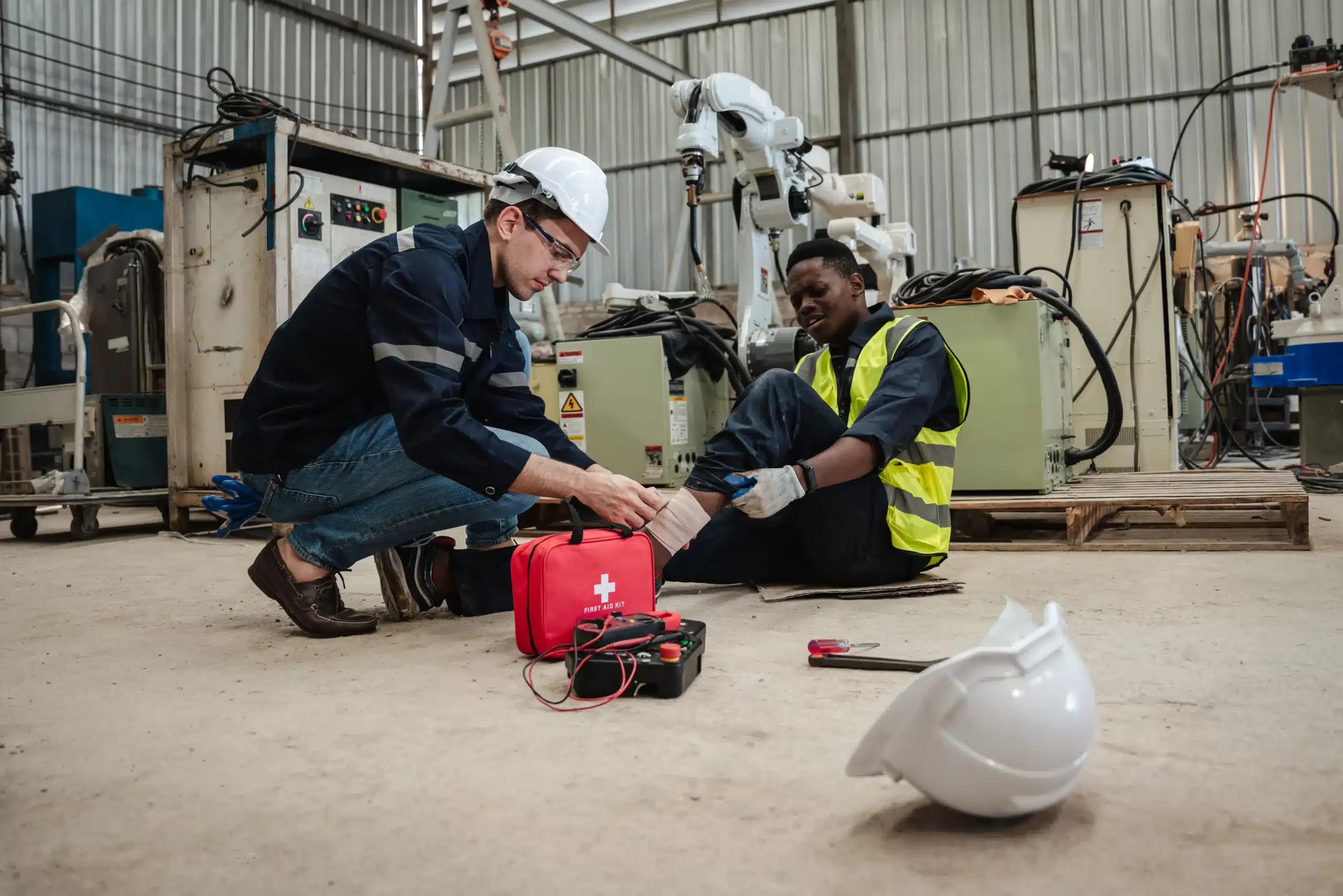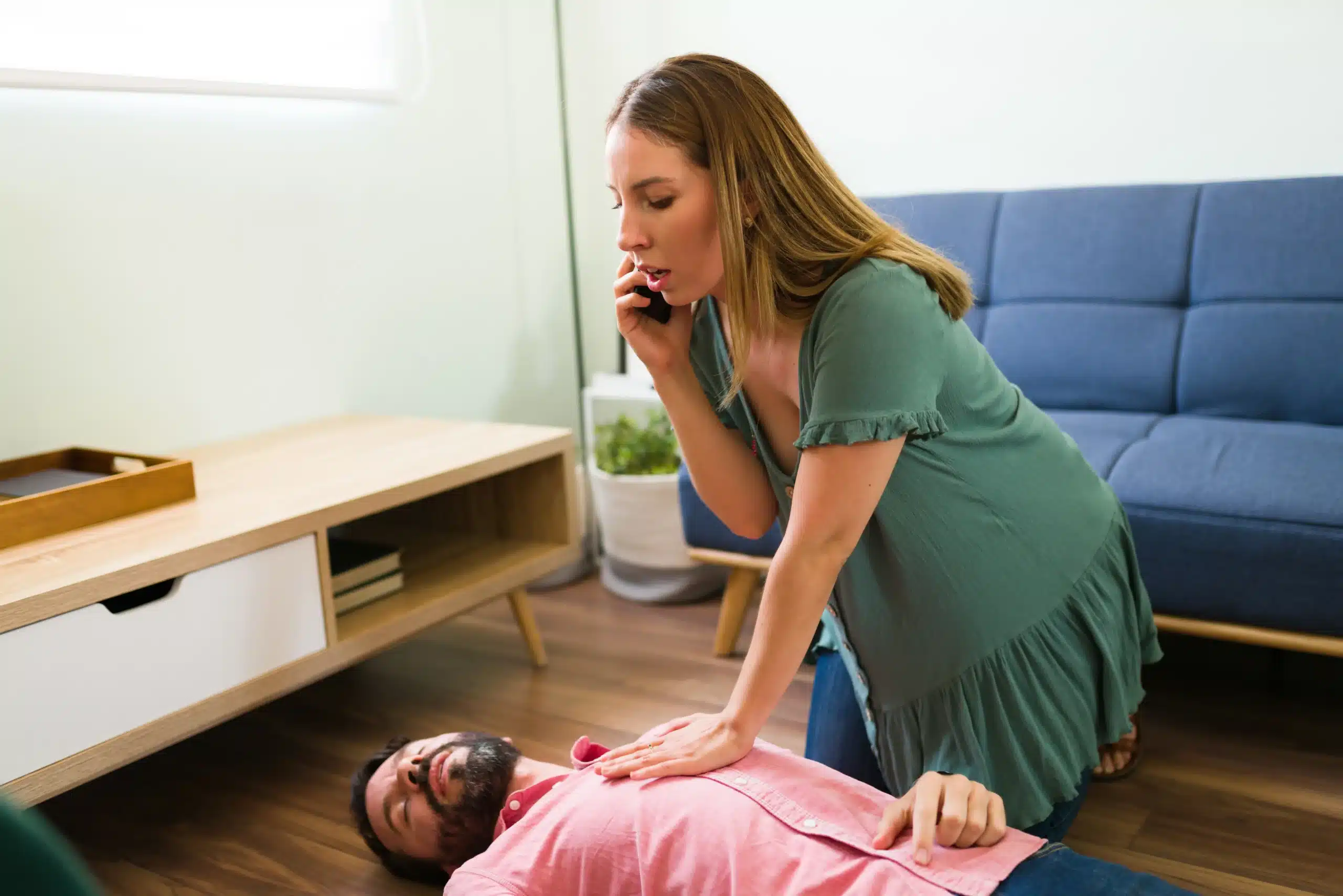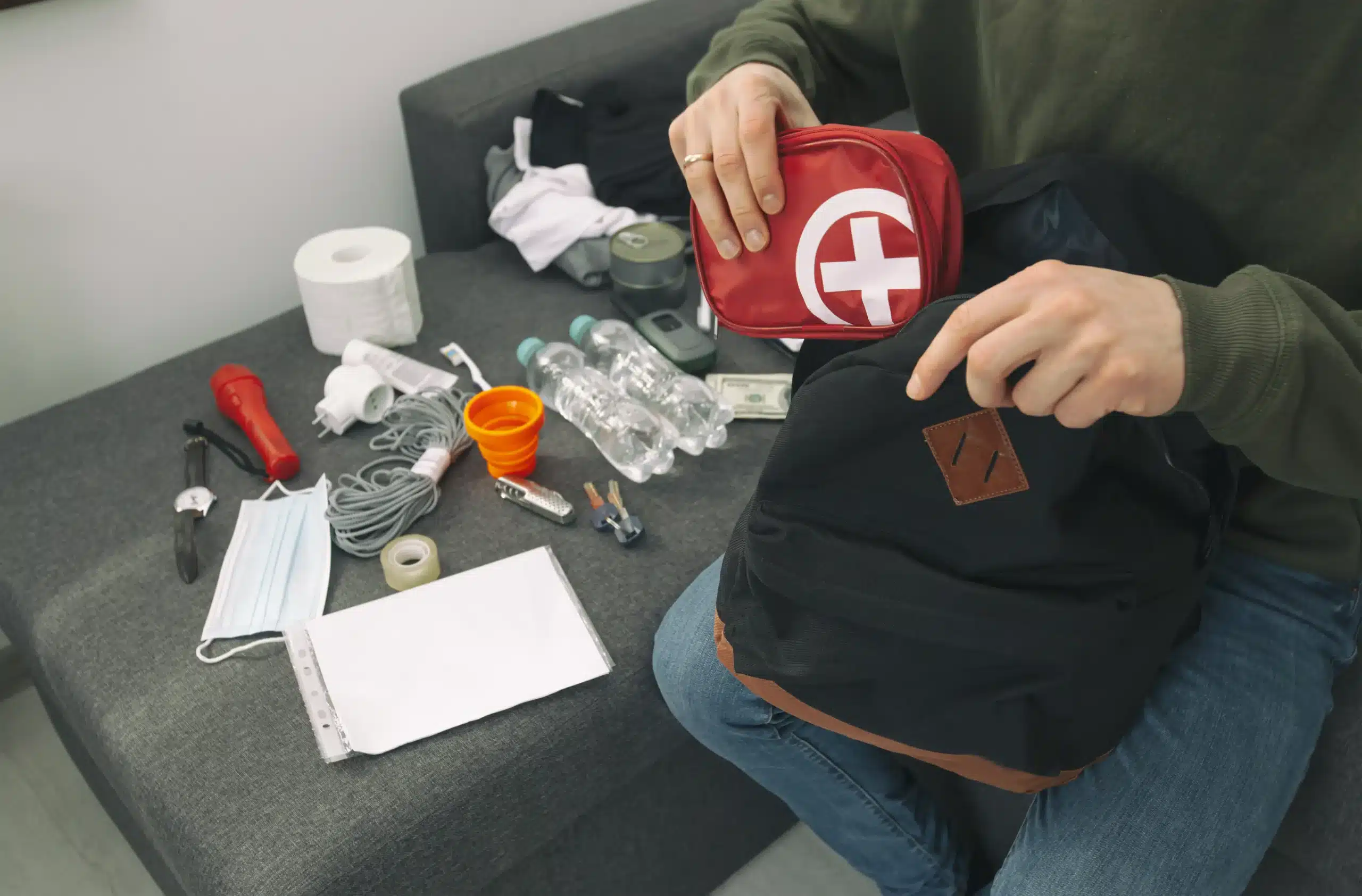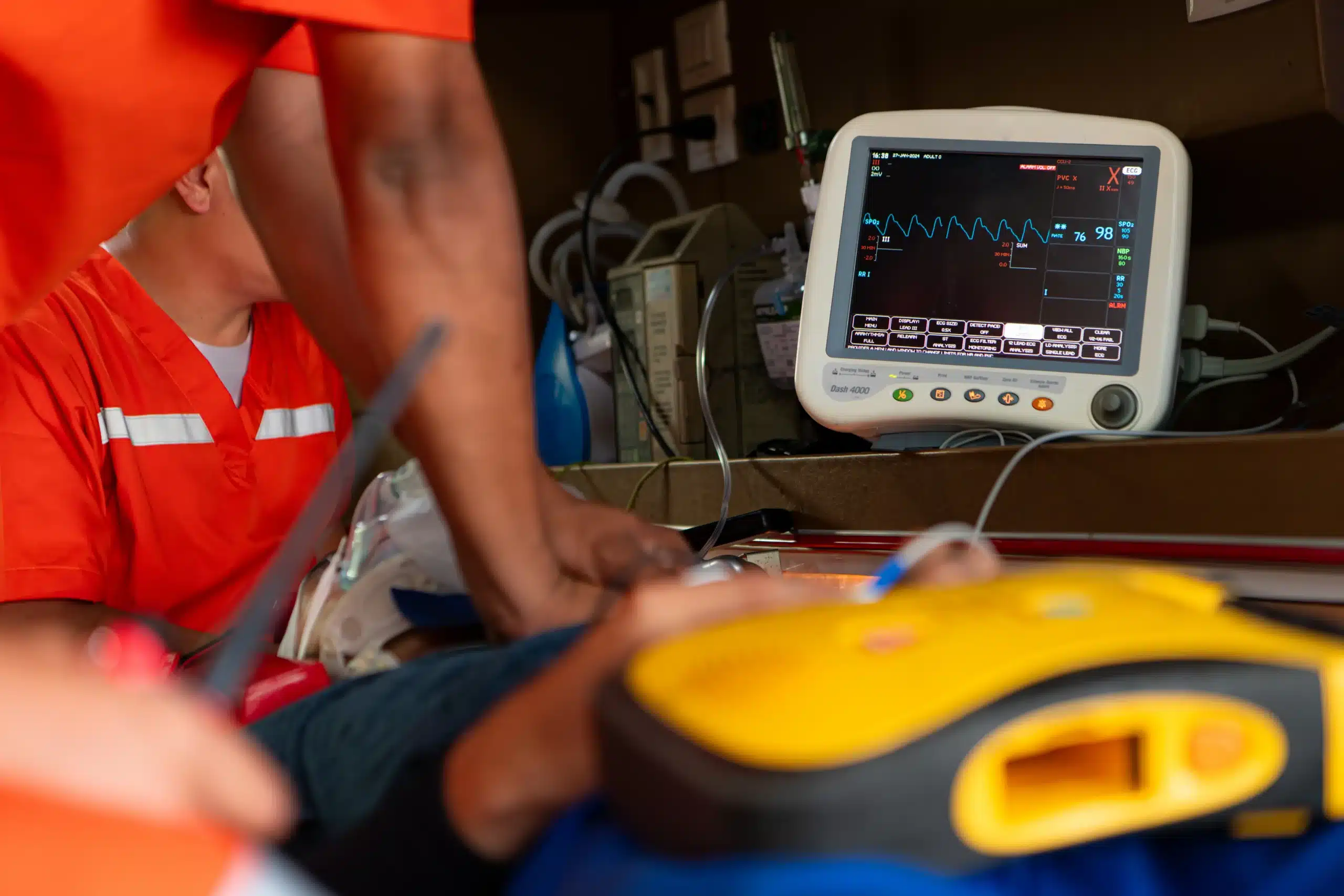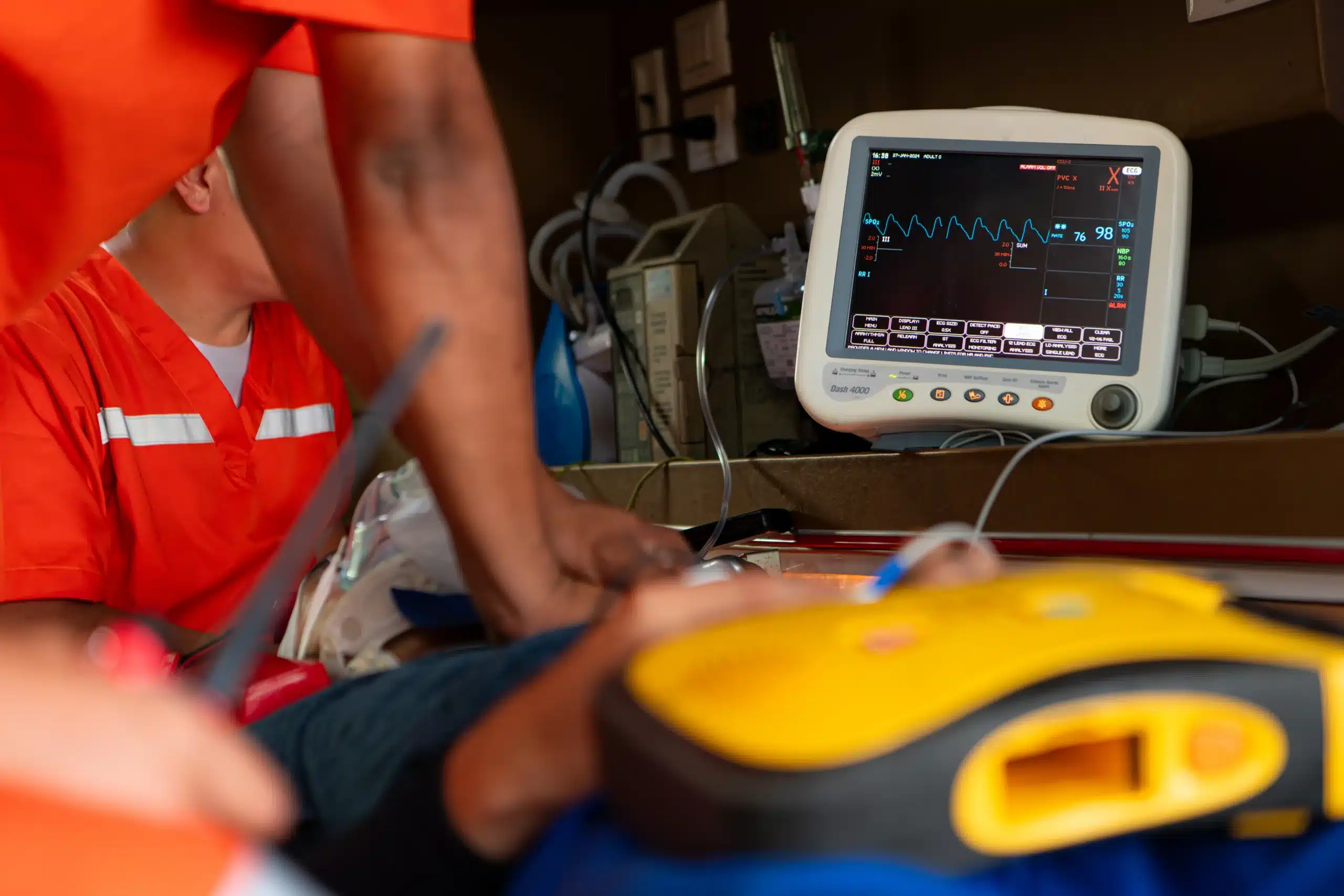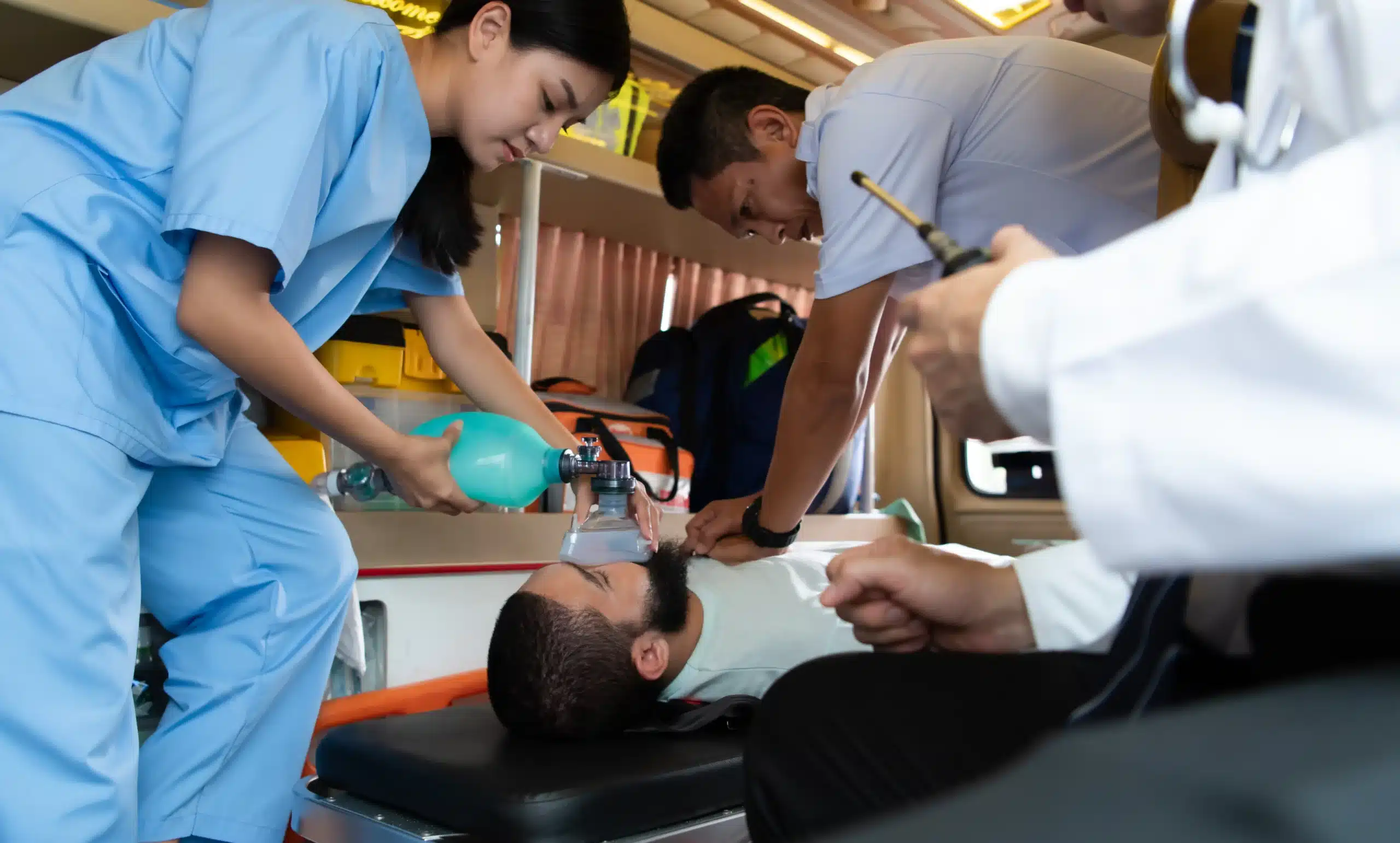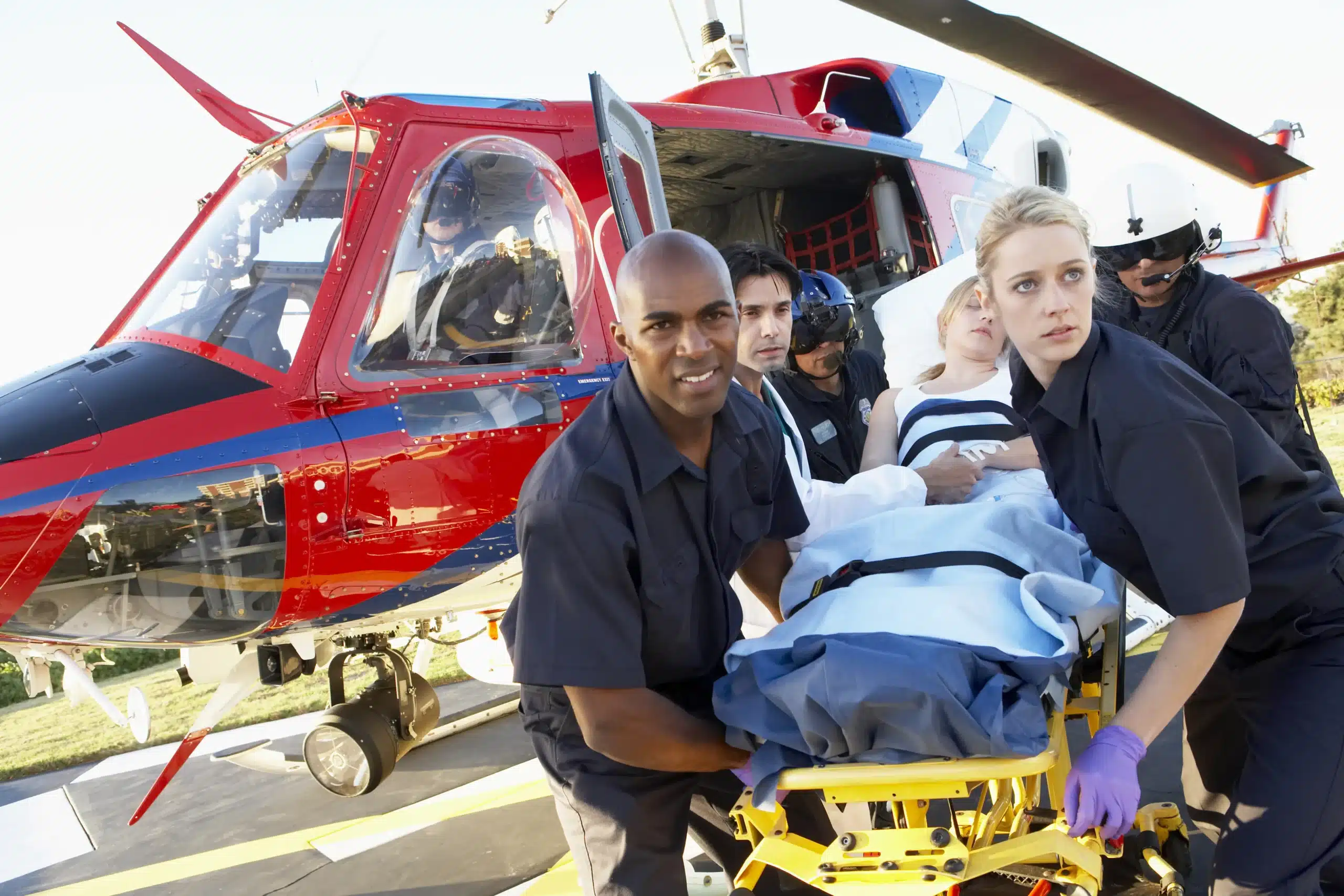Life is unpredictable. Emergencies happen. But you don’t have to feel helpless. BLS certification equips you with the skills and confidence to provide critical care when it matters most. This guide is your one-stop resource for all things BLS. We’ll explore what BLS is, why it’s important for both healthcare professionals and the general public, and how to find “BLS certification near me.” We’ll also delve into various training options, discuss costs, and provide tips for maintaining your certification.
Key Takeaways
- BLS certification empowers you to act in emergencies: It goes beyond basic CPR, providing training in AED use, ventilation techniques, and other life-saving skills applicable to various medical crises. This makes it invaluable for everyone, not just healthcare professionals.
- Finding a BLS course that fits your life is simple: Explore local options, use online search tools, or check out providers like Rocklin CPR Classes or national organizations such as the American Red Cross and American Heart Association. Choose from in-person, online, or blended learning formats to match your schedule and learning style.
- Staying certified means staying prepared: BLS certification is typically valid for two years. Renew on time, keep up with the latest guidelines, and practice regularly to maintain your skills and confidence for effective emergency response.
What is BLS Certification & Why Do You Need It?
Knowing how to respond to a medical emergency can make all the difference. Basic Life Support (BLS) certification equips you with the skills to provide immediate care in such situations. Whether you’re a healthcare professional or someone who wants to be prepared, understanding BLS is invaluable. Let’s explore what BLS certification entails and why it matters.
What is BLS?
BLS certification is a nationally recognized credential that signifies your ability to perform life-saving techniques. It focuses on providing immediate care during emergencies like cardiac arrest, respiratory distress, and choking. BLS goes beyond simple CPR, encompassing a broader range of skills, including using an AED and providing ventilation. It emphasizes teamwork, high-quality CPR, and following evidence-based guidelines. This certification is crucial for healthcare providers, but also beneficial for anyone wanting to be prepared in a crisis.
What Will You Learn in BLS Training?
BLS training provides you with the essential skills to respond effectively to medical emergencies. You’ll learn how to recognize the signs of someone experiencing a life-threatening event, perform high-quality CPR, and use an automated external defibrillator (AED). The training also covers techniques for relieving choking and providing ventilation. These skills empower you to act quickly and confidently in critical situations, potentially saving a life.
Who Needs BLS Certification?
While often associated with healthcare professionals, BLS certification is valuable for a much wider audience. Anyone who might need to respond to a medical emergency can benefit from this training. This includes teachers, coaches, lifeguards, childcare providers, and even parents. BLS training is a practical skill for anyone who wants to be prepared.
Common BLS Misconceptions
Several misconceptions surround BLS certification. One common myth is that it’s only for doctors and nurses. In reality, BLS training is beneficial for anyone, regardless of profession. Another misconception is that it’s too time-consuming. While comprehensive, BLS courses are designed to be efficient and manageable, fitting into busy schedules. Finally, some believe BLS is unnecessary if you have CPR training. While CPR is a component of BLS, the latter covers a broader scope of skills, including using an AED and managing airways. Learning more about these misconceptions can help you make informed decisions about pursuing BLS certification.
Find BLS Certification Courses Near You
Now that you understand the importance of BLS certification, let’s explore how to find the right course. There are several avenues you can explore, depending on your learning style and location.
Local Training Providers
Start by searching for local training providers. A quick Google search for “BLS classes near me” often turns up several options. Compare providers, consider costs and any available discounts, and check for flexible scheduling to find the best fit. Many local businesses, like Rocklin CPR Classes, offer American Heart Association-certified BLS courses, along with other certifications like CPR, ACLS, PALS, and First Aid. This allows you to conveniently complete multiple certifications at once.
Online Search Tools & Course Locators
Several online search tools and course locators can help you find BLS courses nearby. These resources often list certified training centers, so you can compare course offerings, schedules, and pricing. Some websites even let you filter by specific criteria, such as course format (in-person, online, or blended) and certifying organization (American Heart Association or American Red Cross).
Rocklin CPR Classes
For those in Rocklin, Roseville, and Sacramento, California, Rocklin CPR Classes offers a variety of American Heart Association courses, including BLS. Their training follows the latest AHA guidelines, ensuring you receive high-quality instruction and learn the most up-to-date techniques. They also offer group discounts, making it a cost-effective option for groups. You can easily contact them to learn more about their courses and schedules.
Other Reputable Providers
Beyond local providers and Rocklin CPR Classes, several other reputable organizations offer BLS certification courses.
American Red Cross
The American Red Cross offers a range of BLS courses, including renewal and recertification options. Their courses are designed for healthcare providers and adhere to the latest evidence-based guidelines. You can find a course near you on their website.
American Heart Association
The American Heart Association is another leading provider of BLS certification. Many training centers across the country offer AHA-certified courses. You can often find these courses through local hospitals, community colleges, and private training organizations like Safety Training Seminars, which offers AHA-certified courses including BLS, ACLS, and PALS.
Hospitals & Community Colleges
Local hospitals and community colleges frequently offer BLS certification courses to their staff and the public. These courses are often taught by experienced healthcare professionals and provide a convenient and affordable option. Check with your local hospital or community college to see what they offer. Many organizations also offer convenient online BLS recertification.
Choose the Right BLS Training Format
Finding the right BLS training format is key to successfully completing your certification. Let’s explore the most common options: in-person, online, and blended learning, to help you decide which one best fits your needs.
In-Person Classes
In-person BLS training offers a hands-on learning experience, guided by an expert instructor. This format is ideal for those who thrive in a traditional classroom setting and value direct interaction. You’ll have the opportunity to practice skills in real-time, receive immediate feedback, and ask questions as they arise. These in-person courses are especially beneficial for mastering life-saving techniques because they provide a structured environment for developing crucial skills.
Online Courses
Online BLS courses provide a flexible alternative to traditional classroom learning. This format allows you to complete the coursework at your own pace, from anywhere with an internet connection. Online learning offers a convenient solution for those with busy schedules or limited access to physical training locations. It’s a reliable option for healthcare professionals seeking to renew their certification or fit training into their demanding routines.
Blended Learning
Blended learning combines the best of both worlds, offering a mix of online coursework and in-person skills sessions. This hybrid approach allows you to learn theoretical concepts online at your convenience, then practice and refine your skills during hands-on sessions with an instructor. Blended learning provides flexibility while ensuring you receive the practical experience necessary for effective training. You can find more information on blended learning CPR courses from the Red Cross.
Factors to Consider
When choosing a BLS training format, consider your learning style, schedule, and budget. If you prefer hands-on learning and direct interaction, in-person classes might be the best fit. If you need flexibility and prefer self-paced learning, an online course could be a better option. Blended learning offers a balance between the two, providing both online convenience and in-person practice. Evaluate your personal needs and preferences to determine which format will set you up for success. For more guidance on choosing a BLS recertification provider, check out this helpful guide.
How Much Does BLS Certification Cost?
Getting BLS certified is an investment in your skills and ability to respond to emergencies. But how much does it actually cost? Let’s break down the typical price range and the factors that can influence it.
Average BLS Course Prices
BLS certification courses typically fall somewhere between $50 and $150. This price range depends on a few things, including your location and the training provider. A course in a major city might be more expensive than one in a smaller town. Likewise, a course from a nationally recognized provider like the American Heart Association might have a different price than a course from a local training center.
Factors Affecting Cost
In addition to location and the training provider, the course format itself plays a role in how much you’ll pay. In-person training, online courses, and blended learning (a mix of online and in-person) each have different pricing structures. In-person classes often include hands-on practice and personalized instruction, which can make them more expensive. Online courses offer flexibility and convenience, and they can sometimes be a more budget-friendly option. Blended learning combines the best of both worlds, and the price usually lands somewhere in the middle. Keep in mind that some courses include extra materials, like textbooks or pocket masks, which can impact the total cost. The training provider’s reputation can also influence pricing—established providers with a strong track record sometimes charge a bit more.
Discounts & Financial Assistance
Want to save some money on your BLS certification? Many training providers offer discounts. See if they have deals for groups—this can be a smart choice if you’re signing up with coworkers or friends. Some providers also offer discounts for students or if you register early. Don’t hesitate to ask about ways to save!
Employer Reimbursement
Your employer might cover the cost of your BLS certification. Many employers understand the importance of having certified employees and offer reimbursement as a professional development benefit. This can be a great way to gain these essential skills without paying out of pocket. Check with your HR department to see if your company offers this perk.
Maintain Your BLS Certification
Once you’ve earned your BLS certification, staying current is key. Knowing how long your certification is valid, how to renew, and simple ways to keep your skills sharp will ensure you’re always prepared.
How Long is Certification Valid?
BLS certification is typically valid for two years. It’s essential to keep track of your expiration date to renew before it lapses. Check your card or contact the organization that issued your certification if you’re unsure when yours expires.
How to Renew Your Certification
Renewal courses are readily available as your expiration date approaches. Many organizations, like the American Red Cross, offer renewal courses online and in person, providing flexibility for busy schedules. Check with your original certifying organization for their specific renewal process. Rocklin CPR Classes offers various renewal courses to help you maintain your credentials.
Stay Current with Guidelines
Emergency care guidelines can change as new research emerges and best practices evolve. Staying updated on the latest BLS guidelines is crucial for providing effective care. Regularly review resources from reputable organizations like the American Heart Association to ensure your knowledge and techniques are current.
Practice Regularly
Even with valid certification, regular practice is essential to maintain proficiency in BLS skills. Consider refreshing your knowledge with online resources, practicing with friends or family, or attending refresher courses. Consistent practice builds muscle memory and confidence, allowing you to respond effectively in real-life emergencies. This ongoing practice is vital for both healthcare workers and the safety of those in their care.
Related Articles
- Basic Life Support in Rocklin: The Ultimate Guide – Rocklin CPR Classes
- BLS Courses in Sacramento: Your Complete Guide – Rocklin CPR Classes
- Find BLS Training Near Me: A Practical Guide – Rocklin CPR Classes
- BLS Certification in Rocklin: Your Comprehensive Guide – Rocklin CPR Classes
- BLS Renewal in Rocklin: Your Complete Guide – Rocklin CPR Classes
Frequently Asked Questions
Is BLS certification only for healthcare professionals? Not at all! While it’s definitely a must-have for healthcare providers, BLS certification is a valuable skill for anyone to have. Teachers, coaches, lifeguards, childcare providers, parents – really, anyone who wants to be prepared for a medical emergency – can benefit from BLS training.
What’s the difference between BLS and CPR certification? CPR is actually a part of BLS, but BLS covers a wider range of skills. Think of it as CPR plus more. BLS training teaches you how to use an AED, manage airways, and work as part of a team during a medical emergency. It gives you a more comprehensive toolkit to handle various situations.
How long does it take to get BLS certified? BLS courses are designed to be pretty efficient, even though they’re comprehensive. The exact time commitment depends on the course format (in-person, online, or blended) and the specific provider, but you can usually complete a BLS course within a day.
How can I find BLS classes near me? A quick Google search for “BLS classes near me” is a great starting point. You can also use online course locators or check with local hospitals, community colleges, and training centers like Rocklin CPR Classes. Many organizations offer various course formats and schedules to fit your needs.
How much does BLS certification cost, and are there ways to save money? BLS courses typically range from $50 to $150, depending on factors like location, provider, and course format. Look for group discounts, early bird specials, or student discounts. Also, check if your employer offers reimbursement for professional development courses like BLS. It never hurts to ask!
